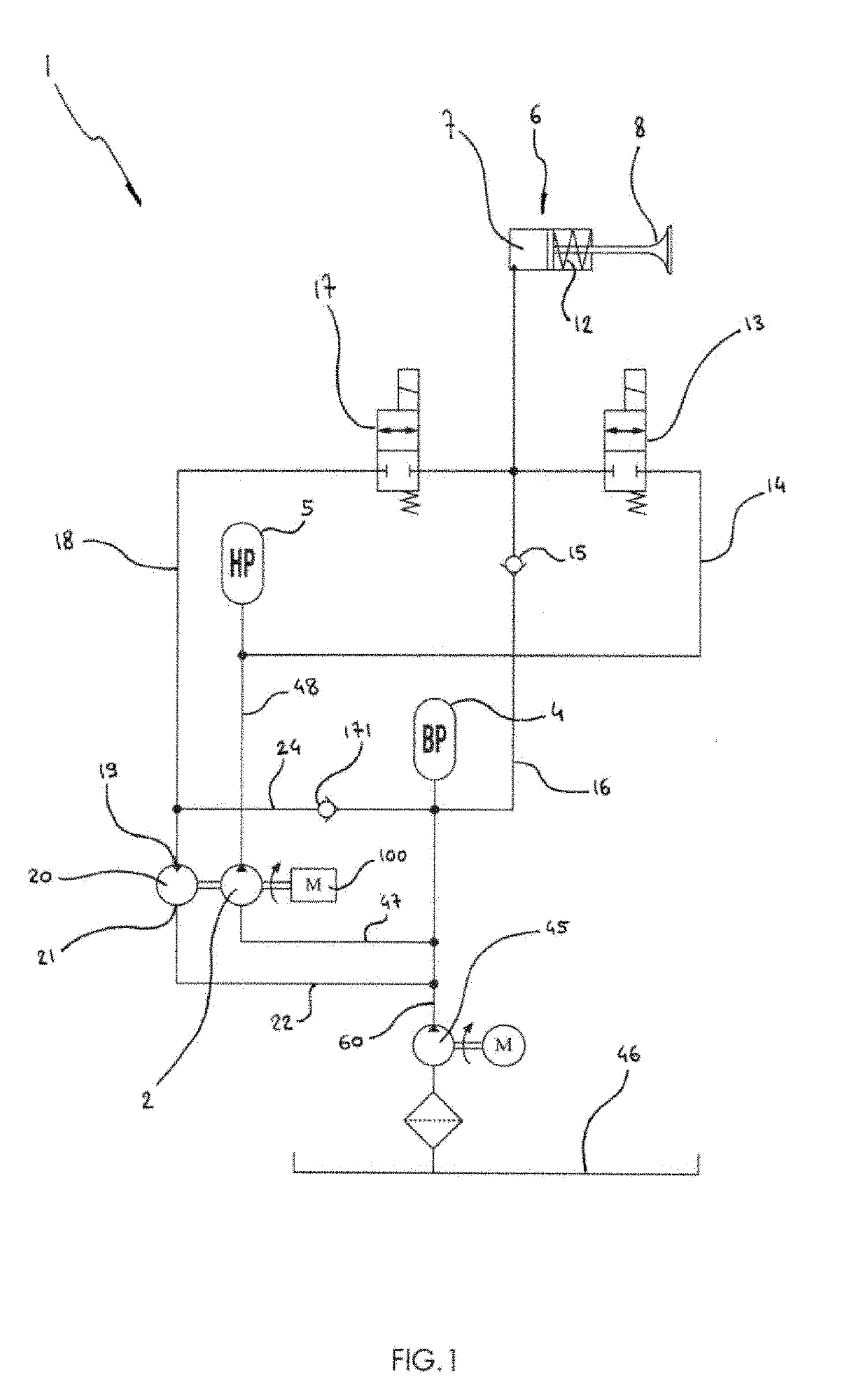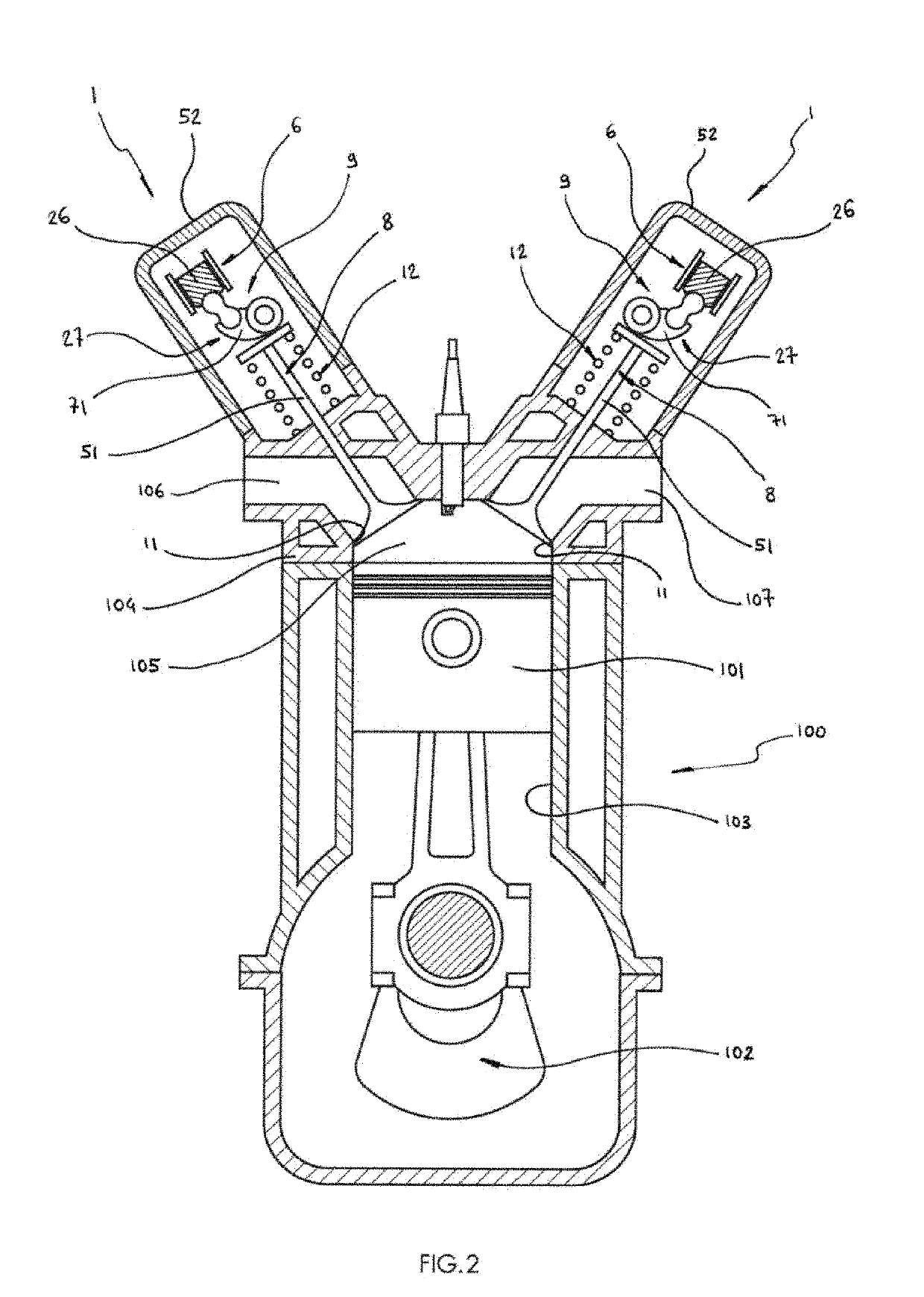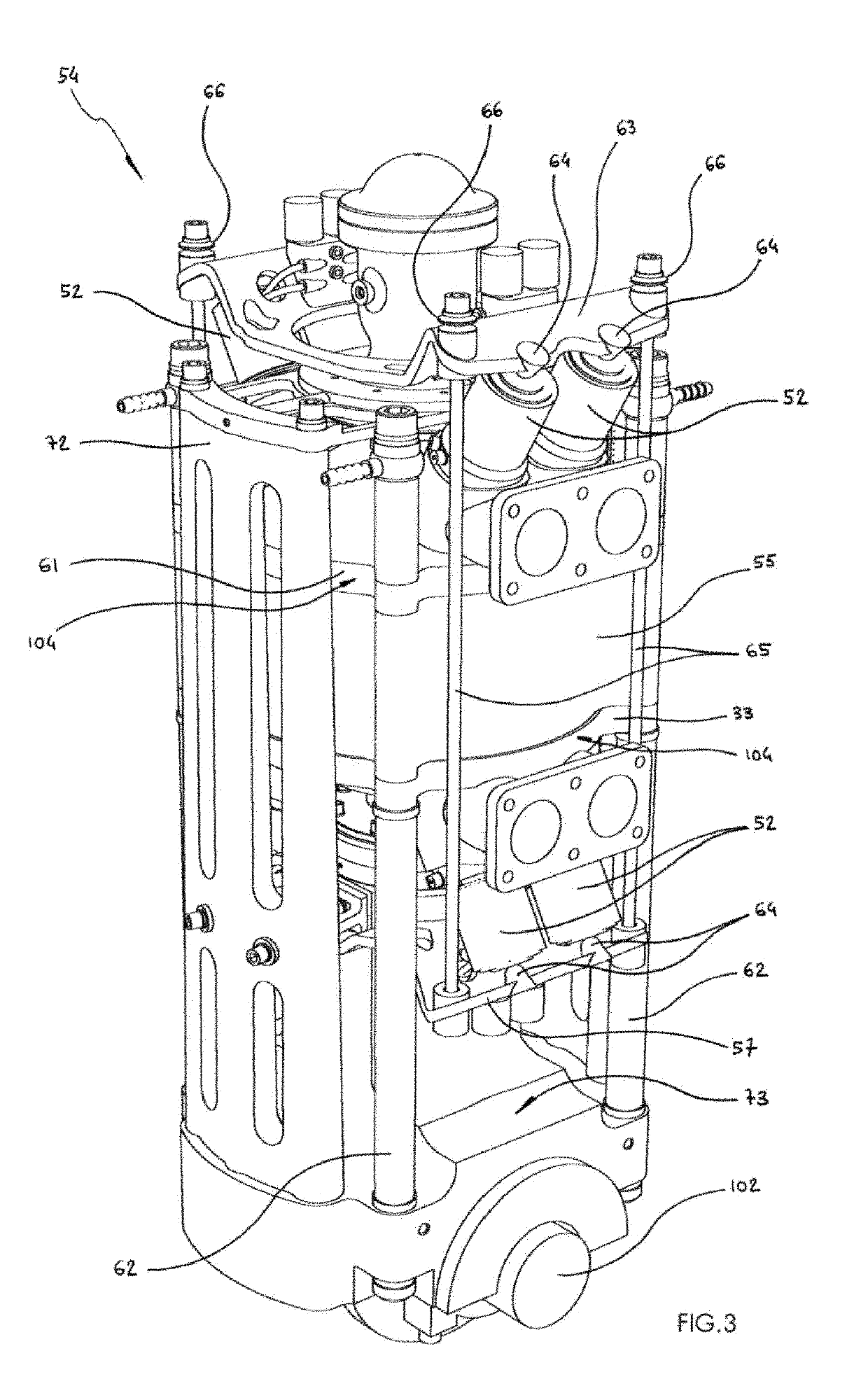Regenerative valve hydraulic actuator
- Summary
- Abstract
- Description
- Claims
- Application Information
AI Technical Summary
Benefits of technology
Problems solved by technology
Method used
Image
Examples
Embodiment Construction
[0098]There have been shown in FIGS. 1 to 35 the regenerative valve hydraulic actuator 1, various details of its components, its variants, and its accessories.
[0099]As FIG. 2 illustrates, the regeneration valve hydraulic actuator 1 is particularly intended for a reciprocating piston compressor or engine 100 which comprises at least one piston 101 connected to transmission means 102 to reciprocate in a cylinder 103 closed by a compressor or engine cylinder head 104.
[0100]Still in FIG. 2, it is seen that the piston 101, the cylinder 103 and the compressor engine cylinder head 104 form a compressor or combustion chamber 105 into which open at least one intake line 106 and at least one exhaust or discharge line 107, one or both of said lines 106, 107 being connected to said chamber 105 by a line orifice 10 which a valve 8 is able to block when it rests on a valve seat 11.
[0101]As FIG. 1 and FIGS. 5 to 12 particularly illustrate, the regenerative valve hydraulic actuator 1 according to t...
PUM
 Login to View More
Login to View More Abstract
Description
Claims
Application Information
 Login to View More
Login to View More - R&D
- Intellectual Property
- Life Sciences
- Materials
- Tech Scout
- Unparalleled Data Quality
- Higher Quality Content
- 60% Fewer Hallucinations
Browse by: Latest US Patents, China's latest patents, Technical Efficacy Thesaurus, Application Domain, Technology Topic, Popular Technical Reports.
© 2025 PatSnap. All rights reserved.Legal|Privacy policy|Modern Slavery Act Transparency Statement|Sitemap|About US| Contact US: help@patsnap.com



